
Current Infectious Disease Reports
Scope & Guideline
Illuminating the Path of Infectious Disease Discovery
Introduction
Aims and Scopes
- Infectious Disease Epidemiology:
The journal covers trends, outbreaks, and epidemiological studies related to various infectious diseases, helping to understand their spread and impact on populations. - Clinical Management and Therapeutics:
It emphasizes advancements in treatment strategies, including novel therapies and management protocols for infectious diseases, ensuring practitioners are informed about the latest clinical guidelines. - Antimicrobial Stewardship and Resistance:
A core focus is on antimicrobial resistance, exploring stewardship practices, resistance patterns, and the development of new therapeutic agents to combat resistant infections. - Infection Prevention and Control:
The journal provides insights into best practices for infection prevention in various settings, highlighting innovative approaches to reduce healthcare-associated infections. - Global Health Perspectives:
It addresses infectious diseases from a global perspective, emphasizing challenges faced in low- and middle-income countries, and the impact of social determinants on health.
Trending and Emerging
- Emerging Viral Infections:
A significant uptick in research addressing emerging viruses such as MPox and Marburg highlights the journal's commitment to understanding and managing new health threats. - Impact of Climate Change on Infectious Diseases:
Recent publications exploring the relationship between climate change and infectious disease outbreaks indicate an emerging focus on environmental health and its implications for infectious disease epidemiology. - Invasive Fungal Infections:
There is a growing interest in the management and treatment of invasive fungal infections, particularly in immunocompromised populations, reflecting broader concerns about fungal resistance and diagnostics. - Artificial Intelligence in Infection Management:
The integration of AI and advanced technologies in managing and predicting infectious disease outcomes is gaining traction, showcasing the journal's openness to innovative approaches. - Antimicrobial Resistance and New Therapeutics:
Research on antimicrobial resistance remains a priority, with an increased emphasis on developing new therapeutic agents and strategies to combat resistant infections.
Declining or Waning
- Traditional Antiviral Therapies:
There is a noticeable decrease in publications focused on conventional antiviral medications, possibly due to the rise of novel therapies and the urgency of addressing emerging viruses. - General Pediatric Infectious Diseases:
Research specifically addressing common pediatric infections appears to be waning, as the focus has shifted towards more complex cases and emerging threats in pediatric populations. - Surgical Infections and Postoperative Complications:
The frequency of articles detailing traditional surgical site infections and management strategies has declined, indicating a potential shift towards more innovative or preventive approaches. - Travel-related Infectious Diseases:
While still relevant, the volume of articles specifically addressing travel-related infections has decreased, perhaps due to changes in travel patterns and public health responses to recent pandemics. - Non-Communicable Diseases Related to Infectious Agents:
Research linking infectious diseases to non-communicable diseases (e.g., cancers related to viral infections) has seen less focus, possibly overshadowed by more immediate infectious disease challenges.
Similar Journals
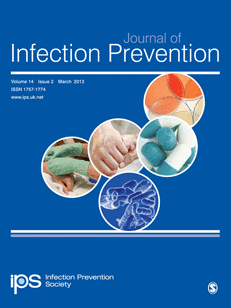
Journal of Infection Prevention
Fostering collaboration in the fight against infections.Journal of Infection Prevention, published by SAGE Publications Ltd, is a pivotal resource in the fields of nursing, public health, and infectious diseases. With an ISSN of 1757-1774 and an E-ISSN of 1757-1782, this journal primarily serves as a platform for disseminating innovative research and comprehensive reviews aimed at enhancing infection control practices and health policy formulation. As of 2023, it holds a prestigious position within category quartiles, ranking Q2 in Advanced and Specialized Nursing and Q3 in Health Policy, Infectious Diseases, as well as Public Health, Environmental and Occupational Health, underscoring its relevance and influence in these arenas. Researchers, practitioners, and students are encouraged to explore the journal's content to contribute to the advancement of infection prevention strategies and the overall improvement of healthcare systems. With a convergence timeline from 2009 to 2024, the Journal of Infection Prevention is committed to publishing high-quality articles that address current challenges in infection control, thus playing a crucial role in the ongoing dialogue among health professionals.

BMC INFECTIOUS DISEASES
Connecting researchers to the forefront of infectious disease science.BMC Infectious Diseases is a premier open-access journal published by BMC in the United Kingdom, dedicated to the field of infectious diseases. Established in 2001, this journal has been at the forefront of disseminating high-quality, peer-reviewed research, contributing significantly to the global understanding of infectious pathogens and their impact on public health. With a 2023 Scopus ranking of #100 out of 344 in the Medicine - Infectious Diseases category, and a notable Q1 quartile classification, it stands as a vital resource for researchers and professionals alike. Authors benefit from the journal's broad reach and visibility, ensuring their work is accessible to a wide audience. Access options are fully open, allowing for seamless dissemination of knowledge in the ongoing battle against infectious diseases. With an established history of publishing groundbreaking studies, BMC Infectious Diseases plays a crucial role in addressing critical issues and advancing research in the ever-evolving landscape of infectious diseases.
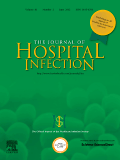
Journal of Hospital Infection
Pioneering Research for Safer Healthcare EnvironmentsJournal of Hospital Infection, published by W B SAUNDERS CO LTD, stands as a pivotal resource in the infectious diseases, medicine, and microbiology sectors. With an impressive impact factor positioning it in the Q1 quartile across its relevant categories, this journal not only ranks highly—#32 out of 344 in Infectious Diseases and #17 out of 140 in Medical Microbiology—but also exemplifies a commitment to advancing knowledge and practice in hospital infection control. Since its inception in 1980, the journal has become a vital platform for disseminating research that informs clinical practices, promotes safety in health care environments, and enhances medical education. While access is non-open, the journal's extensive scope and rigorously peer-reviewed contributions ensure its relevance and significance to researchers, professionals, and students aiming to stay at the forefront of this dynamic field. The journal’s headquarters in London underscores its international relevance, making it an essential reference for anyone involved in combating hospital-acquired infections.

Revista Espanola de Quimioterapia
Innovating Solutions in Microbiology and PharmacologyThe Revista Espanola de Quimioterapia, published by the SOCIEDAD ESPANOLA QUIMIOTERAPIA, is a pivotal open-access journal that has been advancing the field of clinical microbiology and pharmacology since its inception in 1989. With an E-ISSN of 1988-9518, this journal caters to a diverse audience of researchers, healthcare professionals, and students, providing them with critical insights into the latest developments in medicinal chemistry and therapeutic strategies. Located in Madrid, Spain, the journal reflects the rigorous academic standards of its associated institutions, contributing significantly to the translation of research into clinical practice. Achieving a Q3 ranking in the fields of Medicine, Microbiology, and Pharmacology in 2023 attests to its growing influence and relevance in the scientific community, making it a vital resource for those engaged in the quest for innovative solutions to pressing healthcare challenges. The journal prides itself on its commitment to maintaining an open-access model since 2018, ensuring that vital research is freely accessible to foster greater knowledge sharing and collaboration within the global scientific community.
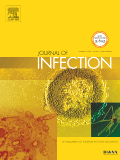
JOURNAL OF INFECTION
Cultivating Expertise in Medical MicrobiologyJOURNAL OF INFECTION is a premier academic publication in the fields of infectious diseases and medical microbiology, published by W B SAUNDERS CO LTD. With a profound impact factor and established since 1979, this journal serves as a crucial resource for researchers, clinicians, and policy-makers seeking to advance knowledge and understanding of infectious processes and their management. The JOURNAL OF INFECTION holds an impressive position in the academic hierarchy as reflected by its Q1 quartile rankings in both Infectious Diseases and Microbiology (medical) for 2023, further underscored by its Scopus rankings: #2 in Medical Microbiology and #5 in Medical Infectious Diseases, placing it in the 98th percentile overall. While the journal does not offer Open Access options, it provides a comprehensive outlet for innovative research, reviews, and clinical insights that drive the field forward. Published from the United Kingdom, it attracts a global readership keen on staying at the forefront of infectious disease research, making it an essential addition to any academic and clinical library.
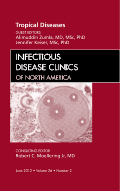
INFECTIOUS DISEASE CLINICS OF NORTH AMERICA
Exploring Critical Breakthroughs in Infectious DiseasesINFECTIOUS DISEASE CLINICS OF NORTH AMERICA, published by W B SAUNDERS CO-ELSEVIER INC, stands as a premier academic resource in the field of infectious diseases and microbiology. With its ISSN 0891-5520 and E-ISSN 1557-9824, this esteemed journal has been at the forefront of disseminating critical research findings and clinical advancements since its inception in 1987. Known for its high impact, the journal ranks in the Q1 category for both Infectious Diseases and Medical Microbiology as of 2023, which underscores its significant contribution to advancing knowledge and practice in these vital areas. Researchers, practitioners, and students alike rely on its comprehensive yet concise reviews and original articles, ensuring they stay abreast of emerging trends and therapeutics in infectious disease management. Although it does not offer open access, the journal remains pivotal in enriching scholarly dialogue and influencing clinical practices in the United States and beyond. Explore this vital publication and join a community dedicated to excellence in infectious disease research.
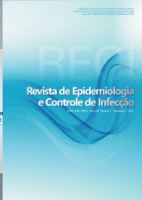
Revista de Epidemiologia e Controle de Infeccao
Exploring Innovations in EpidemiologyRevista de Epidemiologia e Controle de Infeccao, published by Universidade de Santa Cruz do Sul, stands as a vital resource for scholars and practitioners in the fields of epidemiology and infection control. This open-access journal, available since 2011, fosters the dissemination of high-quality research and practice-based knowledge aimed at enhancing public health and improving infection management strategies. With its commitment to sharing invaluable insights from Brazil and beyond, the journal encourages broader participation in critical discussions surrounding infectious diseases. Although specific metrics such as the HIndex and Scopus rankings are currently omitted, the journal's relevance is underscored by its open accessibility, allowing a global audience of researchers, healthcare professionals, and students to engage with innovative studies and findings in this essential area of public health.
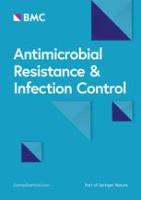
Antimicrobial Resistance and Infection Control
Exploring innovative solutions in infection control.Antimicrobial Resistance and Infection Control is a leading open access journal published by BMC, dedicated to the dissemination of research in the critical area of antimicrobial resistance and its impact on infection control practices. Since its inception in 2012, the journal has quickly established itself as a vital resource for researchers, healthcare professionals, and policymakers, featuring a robust array of studies that address the escalating threats posed by antimicrobial resistance across various contexts. With its impressive Q1 rankings across multiple categories—including Infectious Diseases, Microbiology, Pharmacology, and Public Health—the journal’s influence is underscored by its consistent placement in the upper echelons of academic research. Furthermore, it holds commendable ranks in Scopus, with percentiles placing it in the top tier of its respective fields. The journal serves as an essential platform for innovative research and discussions aimed at curbing the threats of antimicrobial resistance, thereby supporting the global health community in striving for effective solutions to safeguard public health.
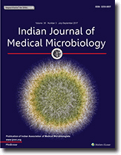
Indian Journal of Medical Microbiology
Advancing the Frontiers of Medical MicrobiologyIndian Journal of Medical Microbiology, published by Elsevier, is a pivotal peer-reviewed journal dedicated to the field of medical microbiology, providing a vital platform for research and scholarship since its inception in 1986. With an Open Access model established in 2001, it ensures the dissemination of scientific knowledge to a global audience, enhancing accessibility for researchers, professionals, and students alike. The journal's scope spans critical areas including immunology, infectious diseases, and microbiology, with an impressive trajectory marked by converged years of publication allowing for a comprehensive exploration of evolving scientific trends. As of 2023, the journal holds a Q3 ranking in Infectious Diseases and Microbiology (medical) and a Q4 ranking in Immunology and Microbiology categories, reflecting its significant yet growing impact in the field. Researchers seeking to contribute to or stay updated on the latest advancements in medical microbiology will find the Indian Journal of Medical Microbiology a valuable resource, as it consistently bridges the gap between emerging science and clinical application.
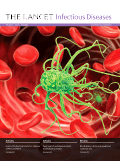
LANCET INFECTIOUS DISEASES
Connecting Researchers to Combat Global Health ThreatsLANCET INFECTIOUS DISEASES is a premier journal published by Elsevier Science Ltd, dedicated to disseminating high-quality research and comprehensive reviews in the field of infectious diseases. Since its inception in 2001, the journal has become a pivotal resource in the medical community, recognized for its rigorous peer-review process and impactful contributions to public health. With an impressive Scopus rank of #2 out of 344 in the category of Medicine - Infectious Diseases, it consistently ranks in the 99th percentile, highlighting its importance and influence in shaping clinical and epidemiological research. The journal's commitment to advancing knowledge in infectious diseases is underscored by its Q1 quartile designation in 2023, affirming its status as a leading academic outlet. Although not an open-access journal, LANCET INFECTIOUS DISEASES provides essential insights for researchers, healthcare professionals, and students, bridging the gap between cutting-edge research and practical application in an increasingly interconnected world.